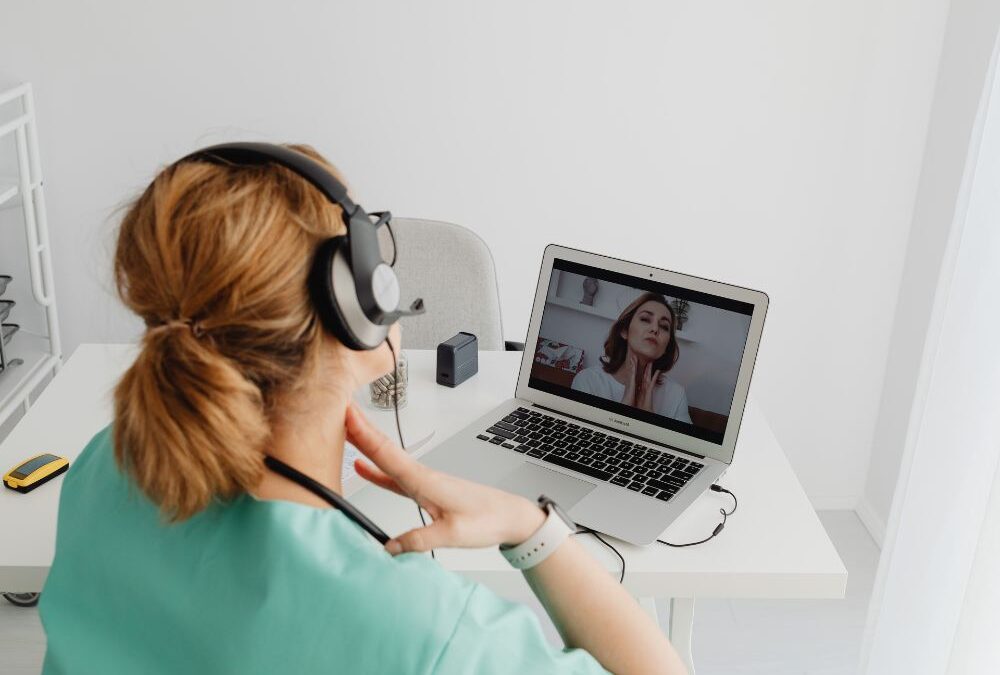Telehealth and its close cousin, telemedicine, exploded during the COVID pandemic. Not surprising, seeing as patients loved and appreciated it. Doctors, not so much. These days, there are plenty of unanswered questions regarding how doctors feel about telehealth. Could it be that tech fears are influencing their thoughts?
For the record, telehealth is the broad implementation of all things healthcare-related via digital and remote technologies. Telehealth encompasses everything from administration to patient interaction. Telemedicine is a much narrower term that refers to the delivery of healthcare services through remote technology.
To doctors who remain wary of telehealth, the differences in definition are irrelevant. They are not comfortable with any aspect of it. Traditionally, we have assumed that their reticence was a belief that telemedicine is incapable of delivering quality care. Yet COVID experiences have blown that myth out of the water. So it must be something else. We go back to technology.
A Peak and Subsequent Fall
The COVID pandemic was telehealth’s coming-of-age. Delivering patient care via telemedicine was the norm while clinics, private practices, and hospitals remained shuttered. Unfortunately, it would appear as though telehealth and telemedicine have already peaked.
During the early stages of the pandemic, roughly 14% of the weekly pre-pandemic visits conducted by some 50,000 surveyed physicians had been moved online. By the second week of June, that number had dropped to 8%. What happened?
Patients certainly didn’t lose interest. According to one consumer survey conducted in 2021, 94% of those patients who experienced telemedicine visits during the pandemic reported being satisfied with the convenience and ease-of-use. In addition, they expressed interest in learning about more virtual care options.
It’s clear that telehealth works for patients. It is clear patients want access to it. So the obvious decline we are now seeing rests with clinicians and/or administrators. Take your pick. Logic dictates that the majority of the decline probably rests with clinicians.
Not Fans of Technology
Analyzing the situation forces us to agree with a 2021 Harvard Business Review (HBR) opinion piece blaming a reluctance among doctors to accept telehealth technology. HBR makes a compelling case by discussing the digital overload clinicians had been facing even before COVID came to our shores.
If you don’t remember, the federal government began its push for Electronic Health Records (EHRs) in the run-up to the approval of the Affordable Care Act (ACA). That was more than a decade ago. Yet still, EHR systems are far from being streamlined. They are anything but easy to use.
Clinicians of all types continue to complain about digital fatigue as a direct result of poorly designed EHR platforms. They routinely complain about spending more time working with technology than actually treating patients. A system that was supposed to streamline healthcare delivery has made it more cumbersome and less efficient.
Technology Needs to Be Simple
We get the fact that doctors still struggle with technology today. We get the fact that the digital transformation in medicine has not been pleasant for them. That’s why we believe telehealth technology needs to be kept simple. Guess what? We can keep technology simple and still make it productive.
Consider any one of our telemedicine kiosks or mobile units. Each model we manufacture facilitates virtual care with ease. Each model includes on-board diagnostic tools that make it possible for clinicians to make informed decisions regarding diagnosis and prognosis.
If tech fears are preventing doctors from embracing telehealth, it is a problem that can be solved. It simply requires that the healthcare and IT industry get together, come up with some standards, and start designing hardware and software around the clinician’s point of view.


Recent Comments